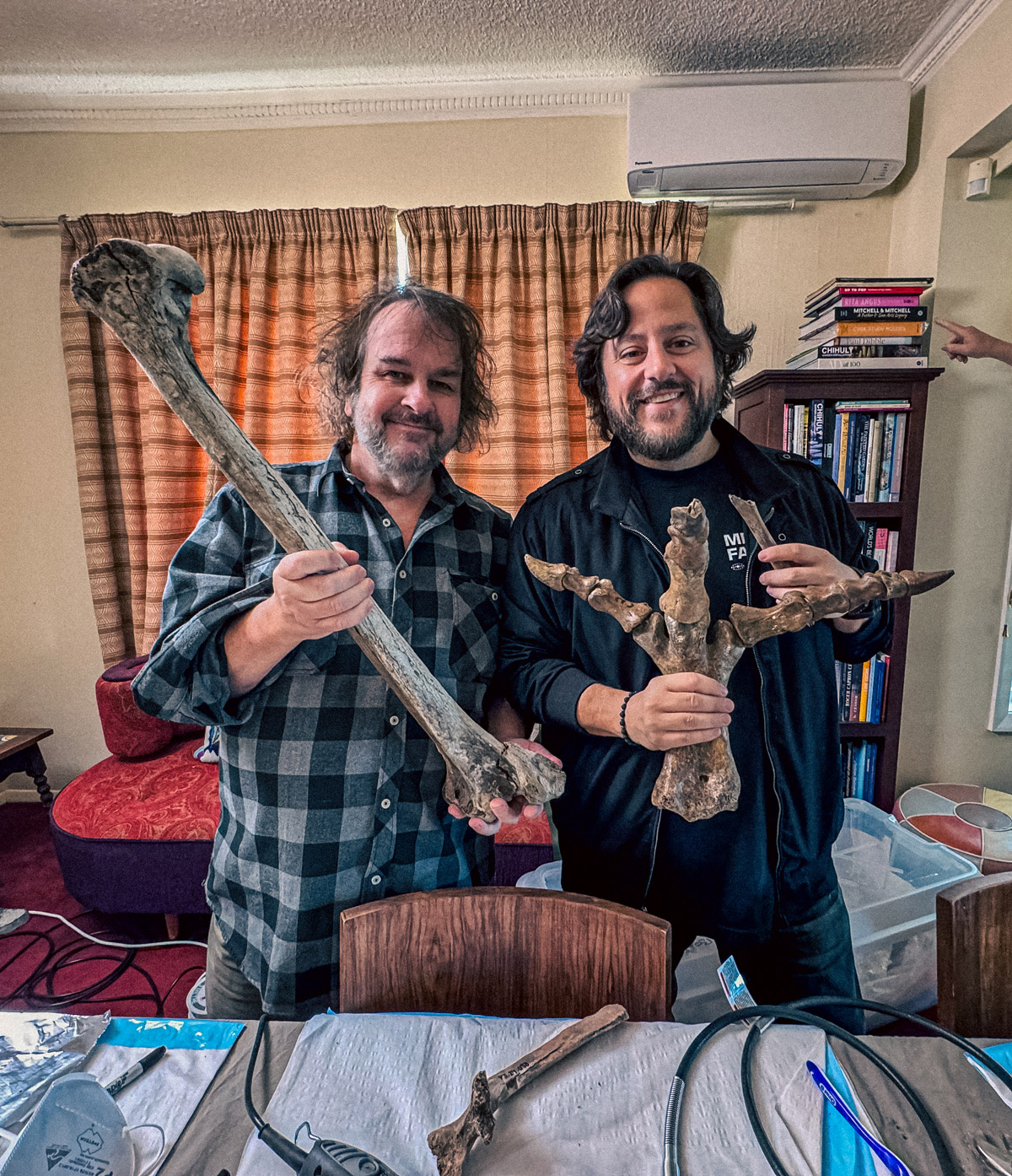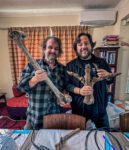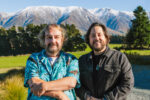
One of the best parts of John Oliver rigging New Zealand’s Bird of the Century contest in 2023 (aside from absolutely everything about it), was getting to see all the fabulously plumed creatures. There’s the kea, kākā, takahe, weka, those frisky kākāpōs (iykyk), Oliver’s winner, the noble pūteketeke, and of course, the kiwi — just to name a few! But one bird wasn’t seen, despite being an emblem of native New Zealand fauna: the moa. Why the shameful snub?! Well, we killed them. Nine species of moa had the run of the islands for thousands of years, ranging in sizes from turkey to 12 feet. So, taller and larger than an ostrich. And like ostriches, the moa were flightless, though one of their unique features was no vestigial wings. Then humans showed up and moa were hunted to extinction within a century… until now? Filmmaker and First Son of New Zealand Peter Jackson has perhaps the largest private collection of moa bones, and he just announced a partnership with Colossal — the biotech company that recently resurrected the dire wolf — to give moa the same de-extinction treatment:
On Tuesday, Colossal Biosciences announced an effort to genetically engineer living birds to resemble the extinct South Island giant moa — which once stood 12 feet (3.6 meters) tall — with $15 million in funding from Jackson and his partner Fran Walsh. The collaboration also includes the New Zealand-based Ngāi Tahu Research Center.
“The movies are my day job, and the moa are my fun thing I do,” said Jackson. “Every New Zealand schoolchild has a fascination with the moa.”
Outside scientists say the idea of bringing back extinct species onto the modern landscape is likely impossible, although it may be feasible to tweak the genes of living animals to have similar physical traits. Scientists have mixed feelings on whether that will be helpful, and some worry that focusing on lost creatures could distract from protecting species that still exist.
The moa had roamed New Zealand for 4,000 years until they became extinct around 600 years ago, mainly because of overhunting. A large skeleton brought to England in the 19th century, now on display at the Yorkshire Museum, prompted international interest in the long-necked bird.
Unlike Colossal’s work with dire wolves, the moa project is in very early stages. It started with a phone call about two years ago after Jackson heard about the company’s efforts to “de-extinct” — or create genetically similar animals to — species like the woolly mammoth and the dire wolf.
Then Jackson put Colossal in touch with experts he’d met through his own moa bone-collecting. At that point, he’d amassed between 300 and 400 bones, he said.
In New Zealand, it’s legal to buy and sell moa bones found on private lands, but not on public conservation areas — nor to export them.
The first stage of the moa project will be to identify well-preserved bones from which it may be possible to extract DNA, said Colossal’s chief scientist Beth Shapiro.
Those DNA sequences will be compared to genomes of living bird species, including the ground-dwelling tinamou and emu, “to figure out what it is that made the moa unique compared to other birds,” she said.
…The direction of the project will be shaped by Māori scholars at the University of Canterbury’s Ngāi Tahu Research Center. Ngāi Tahu archaeologist Kyle Davis, an expert in moa bones, said the work has “really reinvigorated the interest in examining our own traditions and mythology.”
At one of the archaeological sites that Jackson and Davis visited to study moa remains, called Pyramid Valley, there are also antique rock art done by Māori people — some depicting moa before their extinction.
So, these guys are going full steam ahead with genetically engineering not just any extinct moa, but the giant 12-foot-tall/500+ pound variety. Have they learned NOTHING from Jurassic Park?! Cause unlike the dire wolf, with moa we’re talking about birds, who we know are the descendants of dinosaurs. And again, not just any bird, but the giant freakin’ moa, who looks like an apatosaurus on stilts! Heck, the giant moa’s scientific name is even Dinornis robustus! Am I the only one who feels like we’re gleefully careening into a Greek tragedy about hubris?! All right, I’ll get off my shrill soap box now. But I’m not the only one with concerns; the full article includes quotes from scientists (not working on the project, obviously) raising practical questions like, where will these franken-moa creatures live after being hatched in the lab? And should we really be de-extincting animals when we, um, don’t exactly have a secure hold on current species surviving what we’ve already wrought on this planet? To what end is this application of genetic science useful?
- This image shows: the giant moa – and in orange at scale next to a human being. Filmmaker Peter Jackson is to team up with controversial genetic engineering firm Colossal Biosciences in an attempt to bring back the extinct South Island Giant Moa to his native New Zealand. The indigenous Ngai Tahu Research Centre has also entered into the collaboration to bring back the giant flightless birds. Colossal hit the headlines earlier this year by claiming to have recreated the ancient direwolf and mice with genetic traits of woolly mammoths – a claim contested by scientists outside the firm. Now Colossal has committed a large investment to New Zealand to build biotechnology within the country and protect its unique biological heritage with a particular focus on the Ngai Tahu tribal area. The Lord of the Rings director Jackson, who has invested in Colossal, says: Im delighted to partner with the Ngai Tahu Research Centre and Colossal Biosciences on a mission to save some of our most precious taonga. Resources will be put into ensuring some of the most critically endangered species in Aotearoa/New Zealand are protected for future generations. With the recent resurrection of the dire wolf, Colossal has also made real the possibility of bringing back lost species. Theres a lot of science still to be done but we can start looking forward to the day when birds like the moa or the huia are rescued from the darkness of extinction. Exciting times lay ahead! Even the journey will bring incredible insights about the history of this land and enrich discussions as to the potential nature of our future here. Ben Lamm, CEO and co-founder of Colossal Biosciences, thanked Jackson for bringing all the parties together to launch the initiative. This partnership represents a new model where indigenous leadership guides scientific endeavors, recognizing that traditional ecological knowledge and cultural context are essential to responsible de-extinction and species preservat
Photos credit: User PaleoNeolitic on Wikipedia, Colossal Biosciences/Cover Images, Getty
















That’s all our ever-increasing fragile ecosystem needs. Like everything isn’t struggling already because of what man is doing on this planet. And it’s about to get worse.
They are extinct for a reason. Nature always knows best. Man knows nothing.
They are extinct because man hunted them to extinction. As with so many creatures. That’s the reason they are extinct, not some intrinsic evolutionary shortcoming. But I am not a fan of ‘de-extinction’. And those ‘Dire Wolves’ were nothing of the kind.
Right. We’re just now doing well with bringing the California condor back from the brink; the planet cannot afford another large bird. I have the same thought when some dingdong talks about cloning a mammoth from some frozen beast. No! We can’t even keep our elephant herds alive & healthy–though heaven knows the Sheldrick Trust is doing their best to (love their insta!); we cannot bring back such a large animal!
The environment is different, human populations are different, this is just beyond stoooopid.
I work from home and mindlessly play tv in the background while I work. And scroll celebitchy.
I’m watching Jurassic park right now, and I’m just saying why don’t we bring back like an adorable extinct species of koalas or something. Or work on protecting our endangered species?
I wonder what kind of impact a $15 million dollar donation would make to actual conservation efforts. This just seems so stupid and self-indulgent. They aren’t “bringing the moa back”, they’re engineering entirely new creatures while the planet burns. Idiocy
Maybe Peter Jackson could take that money and save a species that isn’t extinct yet before it’s too late instead of genetically engineering a moa back into existence!
Yes, this!
Put the effort into saving species on the brink and their habitats.
And if you really must, don’t try to resurrect the giant one! That just makes it seem like it’s rich dude PJ’s version of ego-rockets to the sky.
Plus what if those moas develop a taste for kiwis? Will it have been worth it to bring back one and decimate the other?
Not a fan of this I think it is wrong on many levels. I agree with some of the comments above use that money to save an endangered species of which there are many!
Save the earth.
Feed hungry people.
House the homeless.
Build schools for kids that don’t have them.
Donate money to researching cures for horrible diseases.
There are so many better uses for this money.
And this also just sounds so scary. These things sound terrifying!
So, he wants to bring back a two-story-sized version of a cassowary?!? Um…er…https://animals.howstuffworks.com/birds/cassowary.htm